| India is, above all, a country of colors. Women's clothes are colorful (especially in Rajasthan), cars and trucks are decorated, animals are decorated, even some buildings are decorated. The result is a constant treat for the eyes. |
|
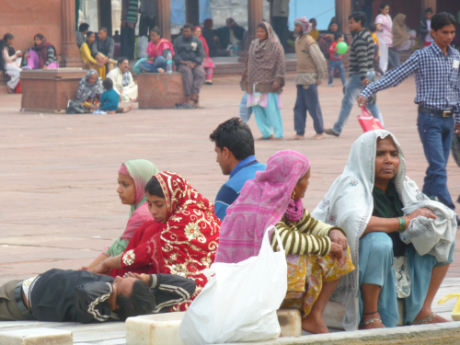 |
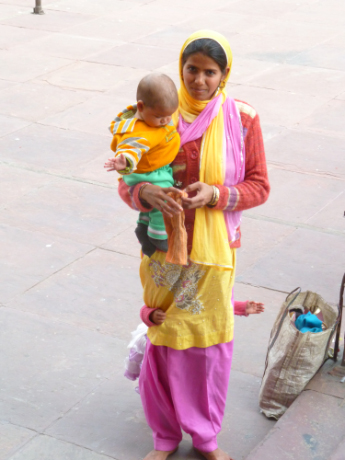 |
| At the mosque in Delhi, one of the first places we visited, we were struck by the bright colors that the women wore. |
Not only are Indian women beautiful and colorfully dressed, they love to have their pictures taken, especially when they have children with them. |
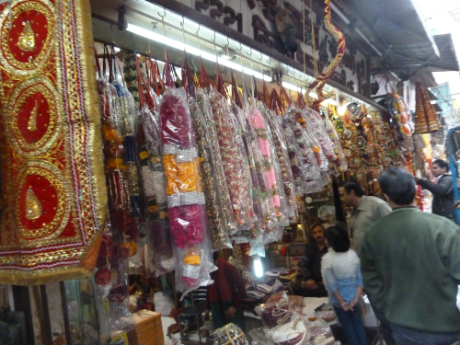 |
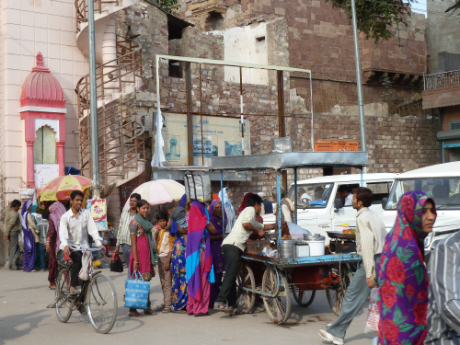 |
| In the markets there were dozens of shops selling beautiful fabrics for sarees (as they usually spell it), wall coverings, bedspreads, etc. |
In Rajasthan the women do not wear sarees, but long wraps and scarves create a similar effect while still covering their heads. |
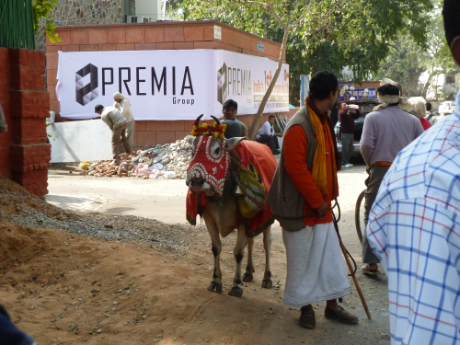 |
 |
| Even the beasts of burden were dressed up to go out. | On almost every corner you would find someone selling fresh food which always looked bright and appetizing. Hindus are vegetarians so fresh produce is central to their diets. |
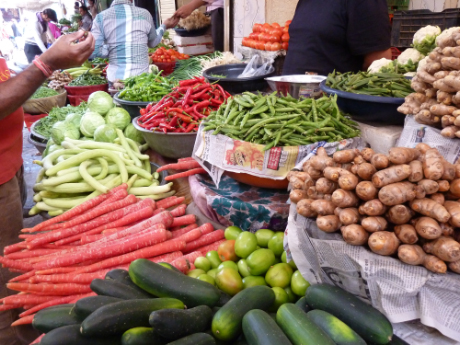 |
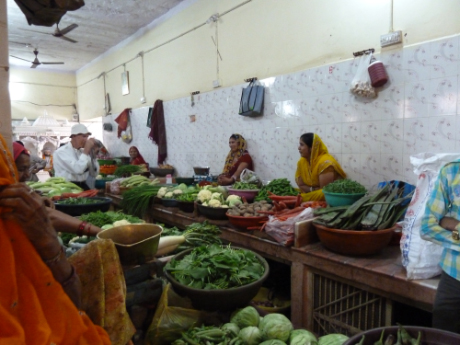 |
| Arranging food to maximize its color and appeal is an art that the vegetable merchants learn. | In the small town of Nagaur there is a special market where only women are allowed to sell from specific stalls, thus giving them a chance to earn some money. Their clothes add to the color of the market. |
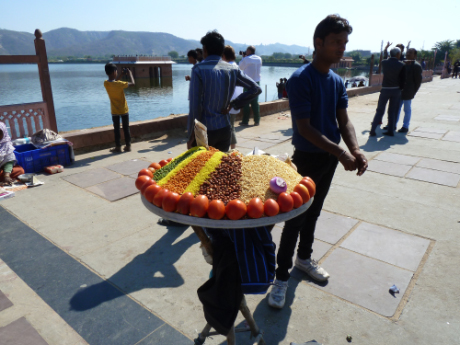 |
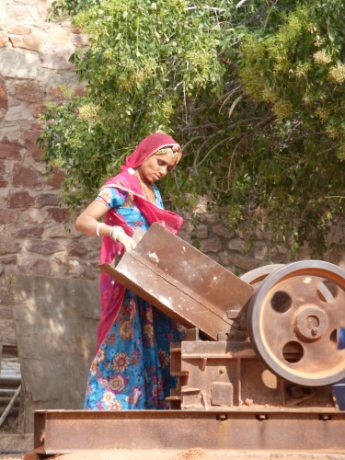 |
| At a sidewalk stand an entrepreneur sells nuts, dried fruits, and tomatoes as snack for the locals strolling along the waterfront. | Even while working as a construction laborer, dumping rocks into a crusher, this Rajasthan woman wears her traditional dress. |
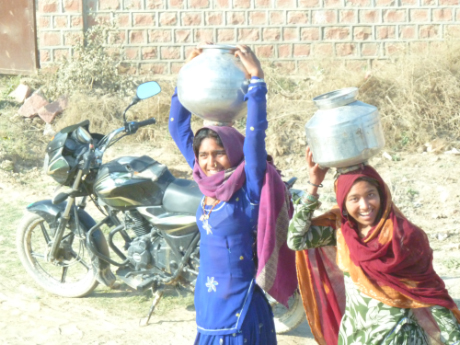 |
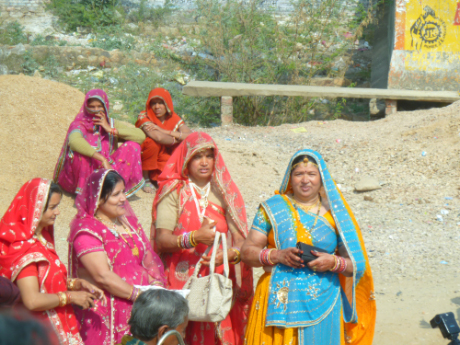 |
| In the rural areas, women still fetch water from local wells. Like all Indians, these women were delighted by our bus and gave us big smiles as we drove by. |
A group of women waiting for transportation to go shopping made a colorful dot on an otherwise dusty brown landscape. |
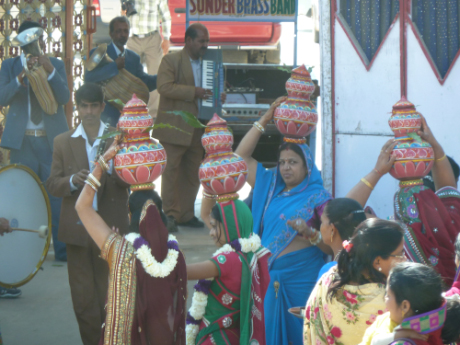 |
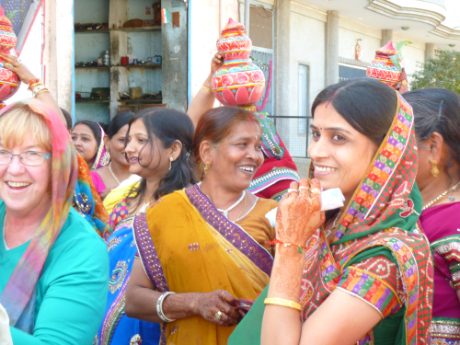 |
| As we passed through one village we saw a whole procession of women, some with decorative pots on their heads, dancing down the street. Girish explained that it was a party of women celebrating the recent marriage of one of their friends. |
When we stopped to take pictures the women invited the women in our bus to join them in dancing before they went on into the party venue. |
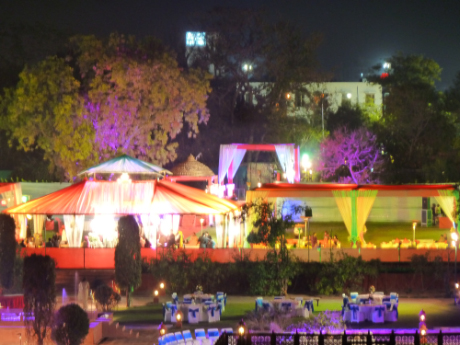 |
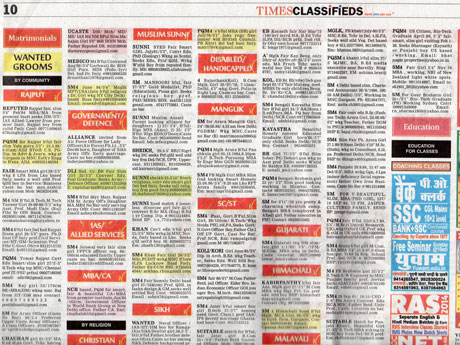 |
| We saw (and heard) many weddings while we were in India. It is a MAJOR event for the family and requires meticulous planning. Guests can number in the hundreds or even thousands, so finding a venue must be a problem for some. This relatively small wedding celebration took place in the gardens of our hotel in Jaipur. | Almost all marriages in India are arranged. The Sunday papers are full of ads placed by parents seeking a mate for their child. The ads are divided by area, religion, economic status, or by caste (even though the caste system has officially been abolished). The bride and groom get to know each other beforehand and either one can decline the marriage. The Indians feel that marrying someone who has been vetted by the family and meets certain standards is far better than the system used in the west (which they call love marriage) and point to our high divorce rate. |
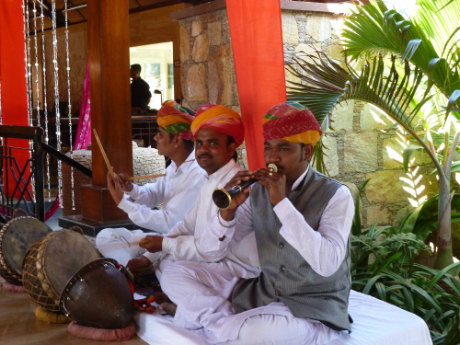 |
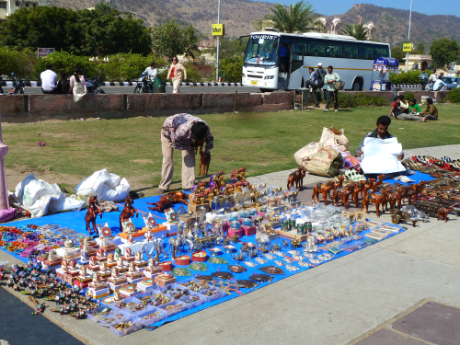 |
| Sometimes the local color is arranged specifically for the tourists, as was the case with these musicians at one lunch stop. One is said to have had a snake, but Pat managed to avoid seeing it. | Part of the local color was provided by the endless vendors who descended upon us at every tourist stop. We much preferred the approach more often seen in the villages, where vendors laid out their wares and waited for you to approach, but it was the exception, not the rule. |
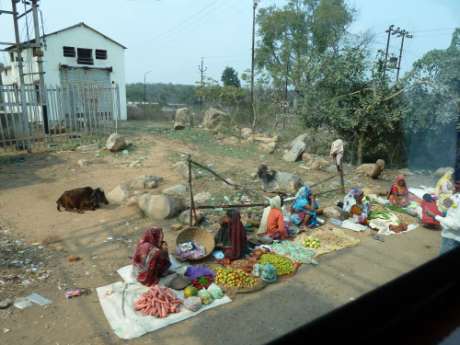 |
 |
| Even in the poorest rural districts you are likely to see at least a small market, often run by women. | Wherever there is a river or other water source, you will find women washing clothes (and themselves). Cold water and air drying seem to be the key to keeping the colors bright. |
 |
 |
